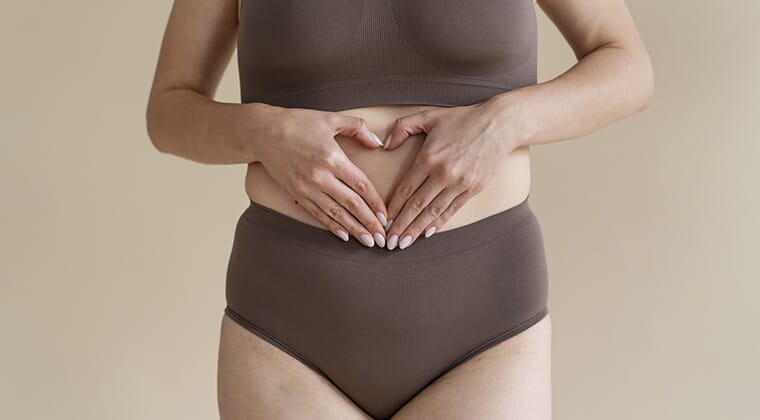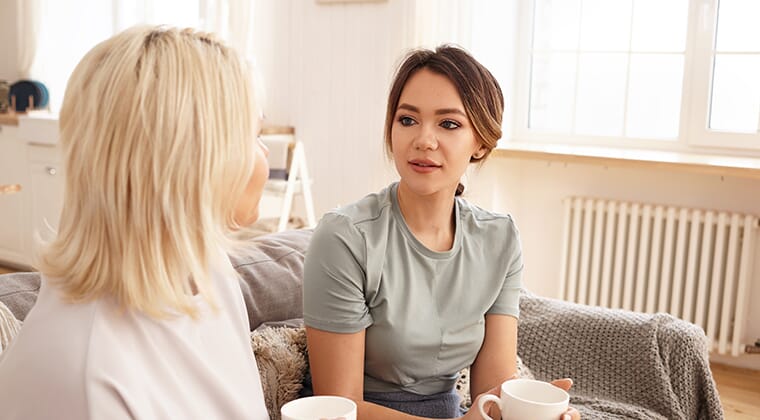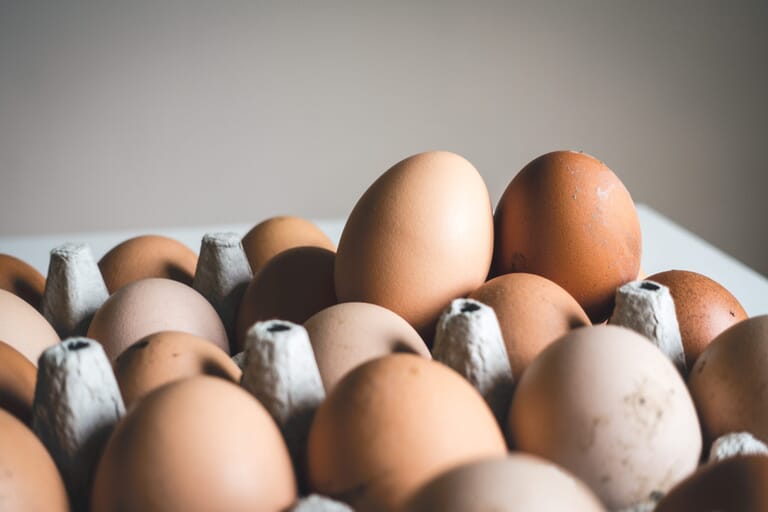When you’re trying for a baby, understanding your fertile signs can help improve your chances of getting pregnant! Everyone’s menstrual cycle is different, but understanding your own personal cycle can help you pinpoint ovulation and your most fertile window.
What are the fertile signs you should look out for?
The most important thing to look out for when you are trying to find your fertile window, are signs of ovulation. There are numerous ways that our bodies change during this time. Knowing what to look out for can help you recognise ovulation without the need for an ovulation testing kit.
1. Cervical mucus
It doesn’t have the nicest sounding name, but it’s a great way of telling when you’re about to ovulate.
The best way to tell if you are producing egg-white mucus is to take a look when you’re next in the toilet and feel for any vaginal discharge. Discharge can vary from sticky and dry, to thin and wet. If you can stretch out the mucus between your thumb and forefinger without it breaking then you are in your fertile period!
You may notice this sign for 1-2 days. The great thing about this sign is that you can check it discreetly without the aid of ovulation testing kits and so you can turn on the romance without putting additional pressure on your partner that you have to do the deed now! It also acts as a natural lubricant. Once you have ovulated, the oestrogen levels drop, and the egg-white mucus disappears to be replaced by a drier sticky discharge.
2. Waking temperature
The usefulness of this sign is that it can help inform you that you have indeed ovulated. It can be something you track every month, or every once in a while. In combination with the cervical fluid sign, it can give you a lot of information about your menstrual cycle and fertile period.
The best way to determine this temperature rise is to take your basal body temperature (BBT). The basal body temperature is your lowest body temperature in a 24-hour period. This will be when you wake up in the morning before you do anything else (even before you sit up in bed!). The most accurate way to do this is to use a specific BBT thermometer and keep it on your bedside table.
What to look out for:
The temperature before ovulation is usually between 36.1- 36.4oC. After ovulation, within a day or two, there is a persistent temperature rise of at least 0.2oC.
The easiest way to interpret this sign is by plotting your daily temperature on graph paper, and you will be able to identify the shift in temperature that will confirm that ovulation has taken place.
It’s worth noting that factors that can affect and increase your usual waking temperature include a fever, drinking alcohol the night before and having less than three hours of consecutive sleep before taking your temperature.
It’s quite common for women not to have a temperature shift. If that happens, don’t worry, it’s not the only sign to help you predict your ovulation period.
3. Cervical position
Throughout your menstrual cycle, the position of your cervix changes. By tracking this, it’s possible to recognise the fertile stage of your cycle.
The cervix sits between your womb and the vagina, and can be felt at the top of the vagina. Therefore, checking your cervix requires putting fingers inside the vagina to assess the cervix.
Although you may feel that this sign isn’t something you are keen to get to grips with, you may have already noticed it. Have you ever felt that a particular sex position is painful at certain times of the month, but not at others? This pain might be related to how your cervix is positioned.
What to look out for:
Before and after your fertile period the cervix will feel low and firm; it will also be closed (you might just feel a dimple) and won’t feel wet.
During your fertile period the cervix is positioned higher and is soft. It will also feel open and wet. It’s at this time that you are at your most fertile.
Other signs of ovulation
As you become more attuned to your body, you may notice other signs that you maybe be ovulating.
These signs include:
- lower abdominal pain/aches on one side or the other,
- midcycle spotting
- breast tenderness in the middle of your cycle.
Interestingly, there is evidence that a woman’s sexual desire increases around the time of ovulation so make sure you take advantage of those feelings!
When are you most fertile?
To increase your chances of conception, the ideal time for sexual intercourse is just before ovulation. A woman is usually at her most fertile a day or two before ovulation and on the day of ovulation itself (but as sperm can live inside the womb for up to 7 days, the whole fertile period can be longer).
A common misconception, however, is that ovulation occurs at the midpoint of the menstrual cycle-at day 14. In fact, cycle length and time of ovulation varies hugely between women, and within each individual woman. So by understanding the physical signs around your fertile period, you can recognise when your ovulation period is approaching.
However, it’s really important that sex remains a key part of your romantic relationship! You don’t want it to become a regimented activity that you are only doing with conception in mind. To maintain a healthy relationship, try to relax and have sex as much as possible throughout the month. The NHS recommends 2-3 times a week, but obviously, there is no harm in doing it more often. Whilst keeping an eye on your fertile signs can be useful for understanding your cycle, try not to let it dictate exactly when you have sex.
What are the chances of getting pregnant while ovulating?
Pretty high! Around ovulation is definitely your most fertile window. The ideal timing would be to have sex as you are ovulating or within 36 hours of ovulation. It’s actually best if the sperm reaches your egg within 4-6 hours of ovulation, but your fertile window is slightly longer.
Can I get pregnant 2,3 or 5 days after my period?
The time between your period and ovulation is known as pre-ovulation. Whilst this technically wouldn’t fall inside the official fertile window, it is still possible to get pregnant if you have unprotected sex here. Around day 7 of your cycle (which would just after your period, depending on how long you bleed for) you may notice your vaginal discharge changing, and becoming a little springier. This won’t be the egg-white mucus of ovulation, but it’s an indication that ovulation is on the way!
Sperm can live up to 7 days when trapped in this fertile mucus, so you could get pregnant a few days after your period – even if your egg hasn’t been released yet. It’s also a good idea to have plenty of sex during this phase – just in case you ovulate early.
How soon can you feel pregnancy symptoms after ovulation?
The biggest indicator of pregnancy is a missed period. This will usually happen 15 days past ovulation (DPO). However, some women notice symptoms as early as 5 DPO. Early pregnancy symptoms can include cramps, breast tenderness and implantation bleeding. Implantation will usually occur 5-6 days after the sperm fertilises the egg. Implantation bleeding will be a lot lighter in both colour and flow than a period.
However, many of these signs could also be associated with ovulation or your normal menstrual cycle. When you’re trying to conceive, you’ll likely be super in tune with your body, looking out for signs of pregnancy. Try not to take a pregnancy test too soon, as it could lead to inaccurate results. Even if you think you are having some signs of pregnancy at 5 DPO, it’s best to wait until when your period would be due to taking a test.
Can you get pregnant on the first try?
Whilst it’s totally possible to get pregnant the first time you have unprotected sex, it isn’t that likely. Even if you aren’t experiencing subfertility or infertility, the chances of getting pregnant on your first try are fairly slim. 84% of couples will get pregnant within the first year of trying. When the NHS talks about ‘trying’ they mean having regular unprotected sex 2-3 time a week, so that can be a lot of tries before getting pregnant. There is a certain window each month where conception is feasible, so don’t worry if you have been having lots of sex and still aren’t pregnant, but do enjoy the practice!
How can I boost my fertility?
Living a healthy lifestyle is the best way to improve your fertility naturally. If you are starting to think about trying for a baby, cutting back in unhealthy habits is important. You should try to quit smoking completely and lower your alcohol consumption as part of your preconception plan. These vices can impact your chances of conceiving naturally and are also harmful during pregnancy. Quitting ahead of time will be better for both you and your baby!
Diet and exercise are also key elements of preconception care and can help to boost your fertility. Following a vitamin-rich fertility diet plan, will help prepare your body for pregnancy and ensure you are getting all the nutrients you need to support good reproductive health. Research has shown that women with a healthy BMI are more likely to conceive. Eating healthily and working out regularly can help you achieve or maintain a good BMI. But also be aware that being underweight is also bad news for your fertility – so don’t go on any crash diets or start hitting the gym twice a day!





